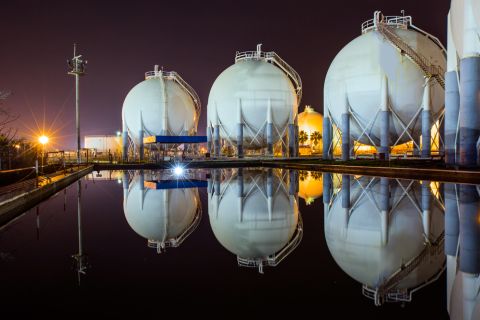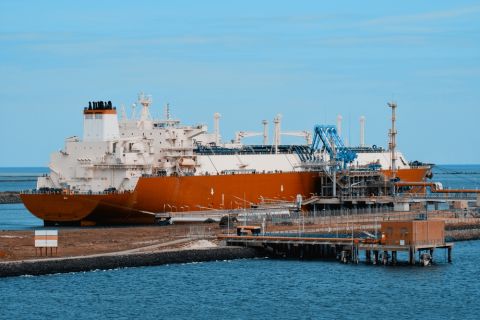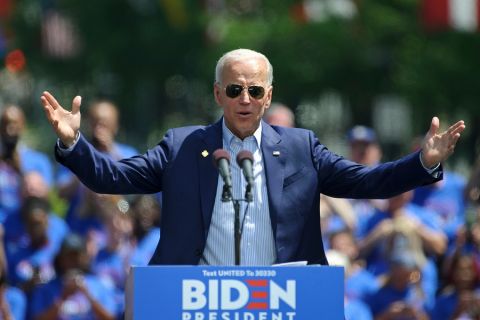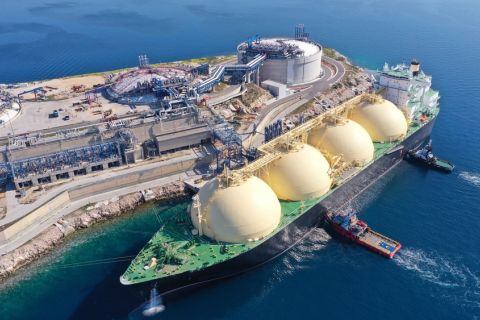
Guyana, which started producing oil offshore in late 2019, is now looking at a strategy to monetize gas associated with the oil projects, the country’s Vice President Bharrat Jagdeo said during CERAWeek by S&P Global. (Source: Shutterstock.com)
Latin America’s newest oil producer Guyana has around 17 Tcf of associated gas, which could spearhead the small country’s next energy wave, the country’s Vice President Bharrat Jagdeo said during CERAWeek by S&P Global.
Initially, Exxon Mobil, leading a consortium including Hess Corp. and CNOOC, wanted to re-inject the gas to maintain the quality of the wells, Jagdeo said on March 6 during a panel discussion at the annual event in Houston. However, the conversation has changed.
“We're having a different kind of conversation to move to monetize this gas,” Jagdeo said. “They're doing some studies and we are also getting some external help to do a gas strategy, but we believe that's the next [energy] wave… because we believe that Guyana has a huge potential for becoming a gas producer.”
Guyana’s potential to develop its associated gas reserves could also encompass its neighbor Suriname, Jagdeo told Hart Energy on the sidelines of CERAWeek.
“Clearly [there’s] the possibility of collaborating with Suriname because there are some finds by Exxon at Pluma which are closer to Suriname, and therefore there may be a possibility of common infrastructure for their development and stuff like that,” Jagdeo said.
Exxon and its partners have found gross discovered recoverable resources of around 11 Bboe in Guyana’s Stabroek Block. Many oil sector pundits and government officials say that figure could be double.
Production from Exxon’s first two Guyana developments, Liza 1 and Liza 2, currently averages over 360,000 bbl/d, Exxon Mobil Guyana Country Manager Alistair Routledge said on March 7 during a separate CERAWeek panel.
RELATED: Exxon Mobil Reports Solid Results, Eyes Permian and Guyana Growth
By year-end 2027, Exxon expects to have six projects online with a capacity of more than 1.2 MMbbl/d, company executives said in early February during a fourth-quarter webcast.
Carbon-negative Guyana
Guyana’s production ramp-up will not convert the country into a net polluter, according to Jagdeo.
“Even with ten vessels operating offshore, we will be carbon negative. We're already carbon negative, [and] where the world is looking to get to in 2050, we are already there,” Jagdeo said during the panel.
Guyana is home to fewer than 800,000 citizens and is primarily covered in forests that assist in capturing CO2.
“Our forest is bigger than England and Scotland combined,” Jagdeo said. “So, it’s a huge [carbon] sink and therefore we have a balanced strategy to develop the oil and gas industry, but we also have strong environmental credentials and we are definitely not causing global warming. Exxon's production environment would be a tiny part of global emissions.”
“In terms of GDP per capita, Guyana’s is about $9,000, but by the end of this decade it could be $35,000, but still half of that of the U.S. We’re still not there yet,” Jagdeo said.
A U.S. company was recently awarded a contract to build a power plant and NGL facility that would start producing in 2024. When completed, it will cut electricity prices by at least 50%, Jagdeo said, without naming the company.
Recommended Reading
Exclusive: ‘Reality Has Hit,’ NatGas Not Just a Bridge Fuel, Landrieu Says
2024-04-11 - The Biden administration's LNG pause is "disappointing" and natural gas is a "solution to energy woes," co-chairs for Natural Allies for a Clean Energy Future Senator Mary Landrieu and Congressman Kendrick Meek told Hart Energy's Jordan Blum at CERAWeek by S&P Global.
Belcher: Our Leaders Should Embrace, Not Vilify, Certified Natural Gas
2024-03-18 - Recognition gained through gas certification verified by third-party auditors has led natural gas producers and midstream companies to voluntarily comply and often exceed compliance with regulatory requirements, including the EPA methane rule.
Hirs: LNG Plan is a Global Fail
2024-03-13 - Only by expanding U.S. LNG output can we provide the certainty that customers require to build new gas power plants, says Ed Hirs.
Pitts: Producers Ponder Ramifications of Biden’s LNG Strategy
2024-03-13 - While existing offtake agreements have been spared by the Biden administration's LNG permitting pause, the ramifications fall on supplying the Asian market post-2030, many analysts argue.
The Problem with the Pause: US LNG Trade Gets Political
2024-02-13 - Industry leaders worry that the DOE’s suspension of approvals for LNG projects will persuade global customers to seek other suppliers, wreaking havoc on energy security.






